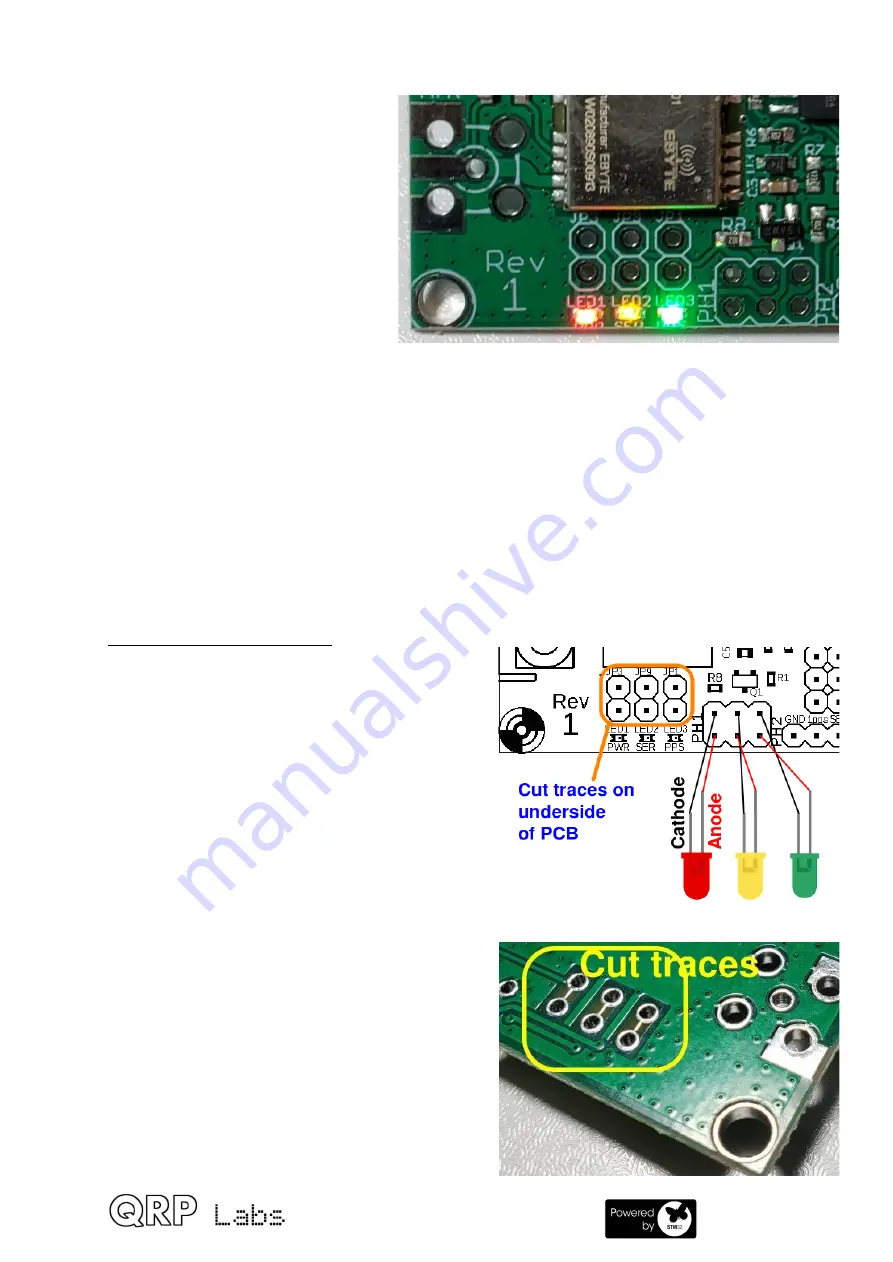
3.6
Status LEDs
Just like it’s predecessor the QLG1,
the QLG2 module has the same
three LED status LEDs.
In the case of QLG2, these are
0603-size SMD LEDs installed on
the PCB near the GNSS receiver
module.
LED 1 (red) is the Power LED and is
always lit when QLG2 is powered.
LED 2 (yellow) is the Serial data
LED and pulses in time with the
serial data. Note that in a departure from the QLG1, this LED is actually OFF during the
data burst (whereas on QLG1 it is ON during the data burst). The reasons for this are
explained later, in the circuit explanation section.
LED 3 (blinding green) is the 1pps indicator and flashes once per second, for 0.1 seconds,
coincident with the 1pps pulse whose leading edge indicates the exact UT second. This
LED only starts blinking once a satellite lock (3D fix computation) has been achieved.
Together, these three LEDs provide an accurate diagnosis of correct operation of the
QLG2.
Connecting external LEDs
You may wish to use external LEDs instead of
the onboard ones. For example, you may wish to
make the LEDs visible on the front panel of your
equipment. After all, which of us does not like
blinking lights on his equipment, and generally
the more the merrier.
In this case, you can connect wires at pin header
PH1, as follows in the diagram (right).
The cathodes (negative, indicated by black lines)
of the LEDs are connected to the pads nearer
the center of the board; the anodes (positive,
indicated by red lines) are connected to the pads
nearest the board edge. The sequence of the
pads, is as three pairs from left to right, as
Power (RED), Serial data (YELLOW) and 1pps
(GREEN) – in other words, the same order as
that of the SMD LEDs on the board.
You would also need to cut the thin exposed
tinned copper traces on the underside of the
PCB, in order to disconnect the onboard LEDs.
This should be done with a sharp knife, carefully
so as not to damage any other nearby traces.
QLG2 manual for firmware 1.00a
11


























